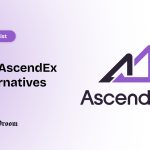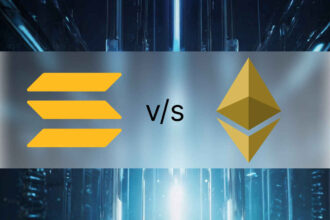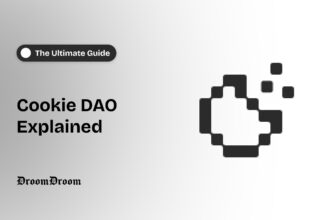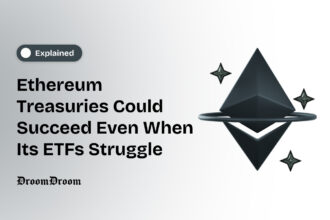Avalanche 9000 upgrade is the largest code change in the Avalanche Network since its launch. The new upgrade packs several improvements such as reduced gas fee, reducing the cost of subnet launch, cheaper subnet maintenance, among many others.
The aim of this upgrade is to keep up with the rapid changes that we saw in Ethereum, BNB and Solana blockchains. Avalanche also aims to solve the problem of interoperability among blockchains with this upgrade.
In this article, we will explain the Avalanche 9000 upgrade in detail and analyze its benefits, possible drawbacks and much more.
Understanding the Avalanche’s 9000 – Etna Upgrade
Avalanche had started rolling out its Etna Upgrade in December 2024. The upgrade packs several major changes to the Avalanche Chains (P Chain, X Chain and C Chain).
Here is a brief summary below.
Sovereign L1s Replace Subnets
Previously, Avalanche used to have subnets which utilised the same validators as available on the P Chain. This meant the subnet creators were forced to use the same validators which were validating mainnet transactions. This sometimes puts an excessive load on validators.
With the new upgrade, subnets will be transformed into sovereign Layer-1 (subnets) chains, meaning they will have their own independent set of validators.
Further, if anyone wished to become a validator on mainnet, they had to stake 2000 AVAX as collateral. This will now change to Layer-1 (subnets) based collateral, which varies among Layer-1 (subnets). There will be an additional fee of 1 to 10 AVAX per month for validators working exclusively on independent Layer-1 (subnets).
The validators on new Layer-1s (subnets) will not have to validate mainnet transactions which used to be compulsory earlier.
Dynamic Gas
The gas fee will now be more dependent on the load on the blockchain and will now become more predictable as per the Avalanche 9000 docs.
Minimum Base Fee Reduction
Base fee for transactions on the C Chain was reduced to 1 nAVAX from 25 nAVAX, a reduction of over 96%.
Virtual Machine Agnostic Interchain Messaging
For each block, a valid signature will be first collected from the Layer-1 (subnets) chain’s validator set and these signatures will be compiled into a single BLS type signature.
As a result, signatures generated by one L1 chain on Avalanche could be theoretically valid on others. This change is being seen as a precursor to interchain-messaging and later could act as the base of inter-chain asset transfer.
Cancun Upgrade Compatibility
The Etna Upgrade will make Avalanche assets (smart contracts, dApps, etc.) compatible with Ethereum mainnet.
However, the blob configurations which were the core of Ethereum’s ProtoDank Sharding were not a part of the Etna Upgrade. This was expected because scaling is not a part of cross-chain communication between Ethereum and Avalanche.
Benefits of Avalanche 9000 Etna Upgrade
The Etna Upgrade has helped reduce the cost of launching and maintaining a subnet on Avalanche far more easier and cheaper than in the past. Besides, it has also granted them much more independence in terms of operations.
Cost of Running Subnets Down by 96%
With a reduction in minimum base fee from 25 nAVAX to 1 nAVAX, we have seen a reduction of 96% in min fees.
Further, with the independence of staking collateral with each Layer-1 (subnets) the limit of 2000 AVAX could be bypassed and as a result all Layer-1 (subnets) on Avalanche could set their own independent collateral staking amount.
Finally, with dynamic fees, dApps on Avalanche or Layer-1 (subnets) could easily choose a smart execution time if they can afford. As an example, this could be possible in blockchain gaming where instant settlement does not have as much priority as DeFi transactions.
More Independence in Developing New Subnets
With reduction in collateral, lowering of subnet validator requirements, lowering of minimum fees, and Cancun compatibility, the level of independence with each project on the Avalanche chain increases significantly.
Further, Layer-1 validators will not have to compulsorily validate mainnet transactions as earlier.
Therefore, it is expected to bring more projects to the network.
How Does Avalanche Work?
Avalanche is a network of interconnected chains where there are 3 main chains called the P Chain, X Chain and C Chain, which together make up the mainnet.
The P Chain is the main transactional layer and is used by subnets.
The X Chain is the exchange chain (not crypto exchange) and governs the creation of new cryptocurrencies, sending and receiving tokens, and their swapping between Avalanche and other blockchain networks.
The C Chain is responsible for Smart Contract execution, launch and maintenance.
The mainnet is connected with individual networks (much like a tree and its branches) that use the Avalanche Validator Network to validate their own transactions (like a main trunk supports different branches on a tree). These subnets, will now transform into independent Layer-1 chains and will be relatively sovereign (they will be still based on Avalanche Mainnet).
Solana vs Ethereum: A Detailed Comparison of Two Leading Blockchains
Criticism
Despite its re-alignment with the current market needs, Avalanche seems to miss out on many aspects of a public blockchain.
No Focus on Scaling Mainnet
Despite reducing fees and supporting wider adoption of its network, the Avalanche 9000 Etna Upgrade fails to address scaling on the main network. Although the main network (C Chain) can process up to 4500 transactions in a second, under optimal conditions, it appears that Avalanche has failed to keep up with Ethereum which aims for 100,000 transactions per second.
Failure to Address Retail Users
It is understandable that Avalanche’s target users are Web3 (probably corporate) projects and not ordinary users, because there is no support for high TPS projects like blockchain games to be launched on the mainnet.
Failure to address the retail market could make survival difficult for Avalanche in the future as Ethereum, Solana, and the BNB Chain are all targeting the retail markets for a major portion of their revenue. Corporate projects often tend to migrate if they can exploit even a small price difference or find a better ecosystem.




















